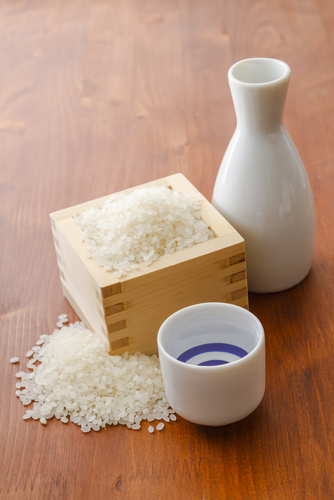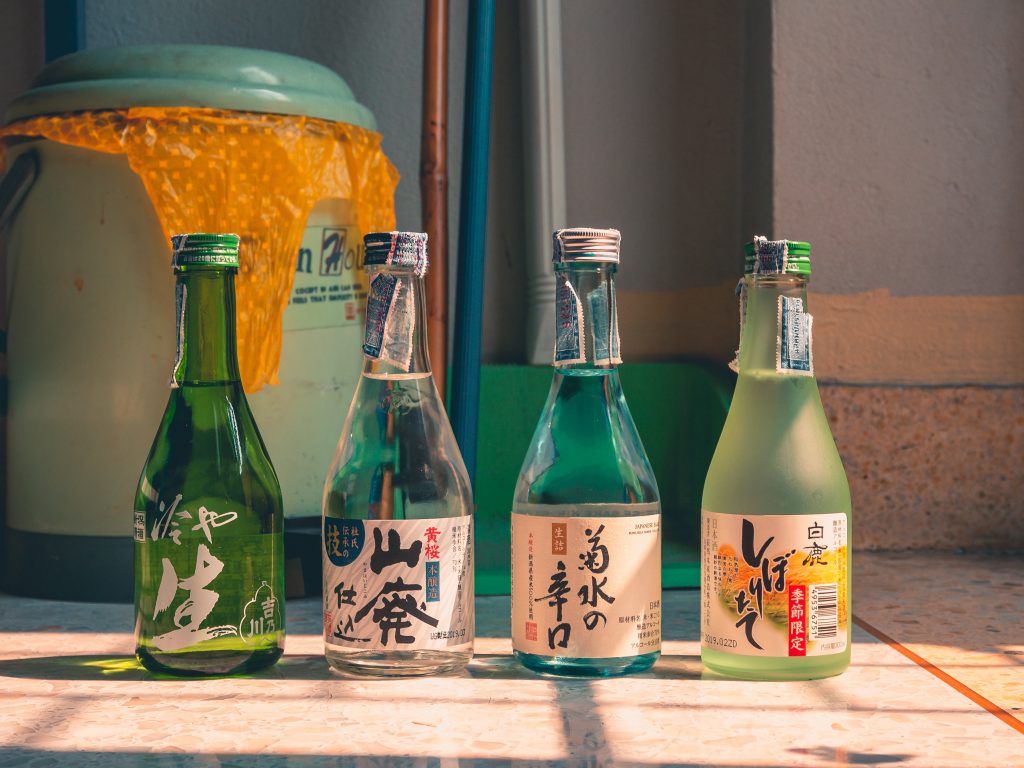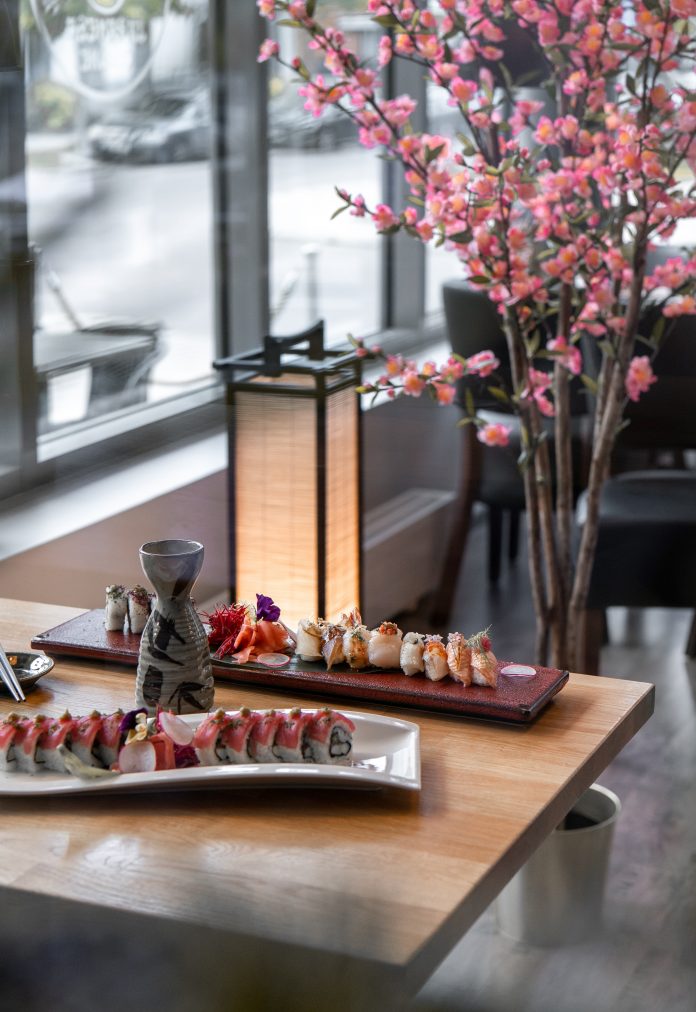It is practically impossible to spell out what makes sake so appealing, and to have it reduced to a singular and strict definition would seem like an attempt at devaluation. Like art, sake has existed for thousands of years in Japan and is constantly evolving.
What we can safely assert for now is that sake is both simple and complex at the same time. Beyond this are many other facets of sake, such as ageing, vessels, pasteurisation, and perceived purity—subjects matters on which people take sides, sometimes with firm convictions. Deep-rooted disagreements may also be found concerning the ridiculously elaborate sake-making process, how sake is best enjoyed, the structure of the industry, and the credos of the major players in the industry.
Overwhelming, right? Seeing that you’ve come here as a beginner wanting to understand slightly more than the rudiments of sake, how about easing into this bit by bit? We’ll start with running through the basics of sake, what it is and how it is made, before unwrapping the terms and concepts you need to know to enjoy it straight away.
What Is Sake?

Simply put, sake is an alcoholic beverage brewed from rice. While this may sound obvious, there are two crucial points revealed here. First, with regard to fermentable materials, sake is made from rice only. No other grains or sugars are used in the sake-making process.
First, with regard to fermentable materials, sake is made from rice only. No other grains or sugars are used in the sake-making process. Thus, even though water, yeast, and a mold known as koji are applied, no other fermentable materials are brought into play.
Yet it is not a simple fermentation like wine, nor is it a distilled beverage like whisky. If we’re to analogise it to something else, it would be closer to a beer but is nevertheless unique.
Sake’s alcohol content roughly falls between 15-16 percent, making it slightly stronger than a robust red wine. The alcohol content in sake has been thinned from the naturally derived 20 percent more or less for enjoyment, since the higher alcohol content overshadows delicate aromas and flavours.
The white rice, which sake is made from, has had the brown exterior portion—the husk—milled away. That is to say, it can’t be malted the way barley is for making beer, but enzymes are still a requisite in chopping the long starch molecules into smaller, pocket-sized molecules. These sugar molecules can be devoured by the yeast cells, which release alcohol and carbon dioxide as a result.
The History and Process of Making Sake
To say that Sake is to Japan as wine is to France is not an overstatement. Like we’ve said at the start, sake has nearly an equally long history. It has been about that long since sake came to bear a resemblance to what we enjoy today, in both production methods and in the nature of the fully achieved product. But in actual fact, sake has been around for approximately 1,700 years. Thenadays, someone left some steamed rice lying around, upon which naturally occurring koji mold and yeast fell. That supposedly typical gesture eventually led to an oatmeal-, mash-like sake.
To create sake, rice harvested in the fall is milled, then soaked and steamed. Koji mold is grown on about a quarter of it. The spores of this mold are sprinkled on generally 20-25 percent of all the rice that goes into a batch of sake, and as this mold grows around and into the grains of steamed rice, it gives forth the enzymes necessary in converting the starch in the rice into sugar.
Next, a yeast starter (moto) is made is a small vat from a mixture of the koji rice, regular steamed rice, water, and yeast. Here a heavy concentration of yeast cells develops. This is to ascertain that when wild yeast or bacterial drops into the tank, the correct yeast will be abundant enough to make no room for adverse effects. To this small yeast starter, more koji rice, steamed rice, and water are added at three different times over four days to keep the yeast population from being unduly diluted. This mixture—the mash, or moromi—is allowed to ferment for 20-40 days, then the rice lees that did not entirely liquidise are filtered away.
The just-completed sake will be pasteurised, filtered, and stored, traditionally for six months. It will be diluted a bit and pasteurised again before it is bottled. This is the gist of the sake-making process. From cover to cover, it takes 6-8 weeks for production, and about six months for maturation.
Rice, Milling, and Craftsmanship
Rice
There is a fistful of differences between sake rice and regular rice. Rice plants used in making sake are taller, and the grains are roughly 30 percent larger, having more starch and less fat and protein than regular rice. Furthermore, the starch that will be converted into sugar is physically saturated in the centre of each grain. Encircling that, near the surface of the rice grain, are fat and protein. In regular rice, these are more tangled within the grain, and the colour is almost entirely consistent throughout due to the uniform distribution of fats, proteins, and starches, which make regular rice tastier than sake rice.
Milling
The second thing that makes one sake superior than another is how much the rice has been milled. This information needs to be nibbled because it is a part crucial to the whole sake-making process. As mentioned above, in sake rice, the starches that will ferment are located in the centre of the grain. Surrounding that are a gathering of fats and proteins. This means that the more the rice is milled, the more one has to remove the less desirable fat and protein, which ultimately implies access to the sought-after starch. The amount of rice that has been milled is referred to as the seimai-buai and is shown as a percentage of the grain’s original size that remains after the milling process.
Craftsmanship
The third case that solidifies sake as better and more expensive than the other is the backbreaking, handcrafted effort that has gone into making it. Sake can be made by machine or by hand. Approximately 80 percent of sake is produced using machine-driven processes, and much of this sake is just fine and can be quite enjoyable. Regardless, almost without exemption, the best sake is made by hand. Every step of the sake-making process is a cornerstone for the next, and the success of any step rests immensely on all that has come before it.
Different Grades of Sake
All the grades of premium sake, namely junmai-shu and honjozo, junmai ginjo and ginjo, and junmai daiginjo and daiginjo, are legitimately defined by little more than how much the rice was milled before brewing. That is how influential milling is.
To make understanding sake as easy as possible: if you remember only one word about the different grades of sake, let it be ginjo. Ginjo sake is to standard sake what single malt scotch is to standard scotch. When you see the term Ginjo on the sake bottles, it means at least 40% of the rice grain has been polished, resulting in a much more fragrant and complex flavour than non-premium sake with less stringent milling requirements.
Nonetheless, keep in mind that there are relatively few overlaps between the premium grades of sake.
Junmai and Non-junmai Types

Junmai Sake is known as pure rice style sake because it contains no distilled alcohol, unlike non-junmai sake. Furthermore, milling is not required during the sake-making process for both Junmai and non-Junmai sake.
The most popular sake that accounts for the lion’s share of all sake produced in Japan is actually the non-junmai sake, also regarded as Futsu-shu, or regular (table) sake. This is a non-premium sake, which is typically fortified with a large amount of pure distilled alcohol for commercial reasons.
When it comes to premium sake, there are official grades involved, known as tokutei meishoshu, or “special designation sake.” Among these, anything with the word junmai in it is made using only rice, water, and koji, with no further alcohol. On the flip side, the three sake types within this premium domain that do not include the word junmai—i.e., honjozo, ginjo, and daiginjo—are assembled by including some distilled alcohol at the end of the brewing process.
[su_highlight background=”#99fffc”]Discover the taste of Junmai Sake and Junmai Daiginjyo Sake with this Prosperity Bundle. [/su_highlight]
Other Types of Sake
Below are several others that you may see indicated on a label. These terms have no legal relationship to grade, which means that these other types of sake can come in all grades.
- Nigorizake is a cloudy sake, in which some of the lees have been deliberately left behind. This type is creamier, chewier, and richer. It is taken for as a throwback to the sake of centuries past, and to moonshine as well.
- Namazake is sake that has not been pasteurised. This type can be fresh, zippy, and lively, but it is not fundamentally better than pasteurised sake.
- Genshu is undiluted sake, generally but not always of a higher alcohol content, perhaps around 19-20 percent.
- Yamahai and kimoto pertain to types made with a yeast starter primed in a way that usually results in an earthier, gamier, richer, flavour profile.
- Koshu and choki-jukuseishu both mean aged sake.
- Kijoshu is a type of sake created using already completed sake in lieu of water. It boasts a delectable sweetness. Very little of this kind is produced.
Ageing, Temperature, and Vessels
Nearly all sake is not aged but is consumed young. You should not collect or store sake, but rather drink it soon after it is purchased. Sake will begin to discernibly change in flavour and aroma after a year. Some sake is aged; however, aged sake is certainly not better than its youthful counterpart. Sake typically gains from a few months of maturation, but it is almost always intended to be drunk young and fresh.
The majority of premium sake like ginjo should be consumed slightly chilled. There are of course the mandatory exceptions. Heating can mask unpleasant aspects of the drink’s flavour and make it more palatable, something that is frequently required in the case of the cheapest futsushu (regular sake).
As a matter of fact, there is a bit of warmed-sake revival going on in Japan now. So enjoy your sake—and your ginjo especially—slightly chilled, but also be open to the idea of consuming some gently warmed.
Wine glasses function well, especially for aromatic ginjo, although stemware is scarcely used in Japan. However, even if it does not charm flavours and enhance aromas, traditional Japanese pottery contributes a tactile and visual appeal to sake drinking. And, most of all, there is no one perfect shape of glass when drinking sake, no matter what anyone says.
Sake and Food
We have reached the last section of this beyond-the-basics guide, so let us make it a memorable one. Sake and food pairing follows the same principles as wine and food pairings. It is important to look for things that flatter aspects of both the food and the sake. Remember, there are no rules! Under no circumstances should sake be restricted to Japanese food, or even to Asian cuisine. While mismatches can be unsatisfactory, there is a wide range of Western food that sake dovetails exquisitely.
Clearly, very strongly flavoured and spicy dishes are the ones to abscond from, as the subtle aspects of sake will get swallowed up. After removing obviously contradictory pairings from the equation experiment with every sort of fish, vegetables, and even lightly prepared meats, you will be surprised at how multifaceted sake can be.
Enjoy same-day* Sake delivery with getIt by Changi Recommends. Download Atome app and pay over 3 easy payments today!







